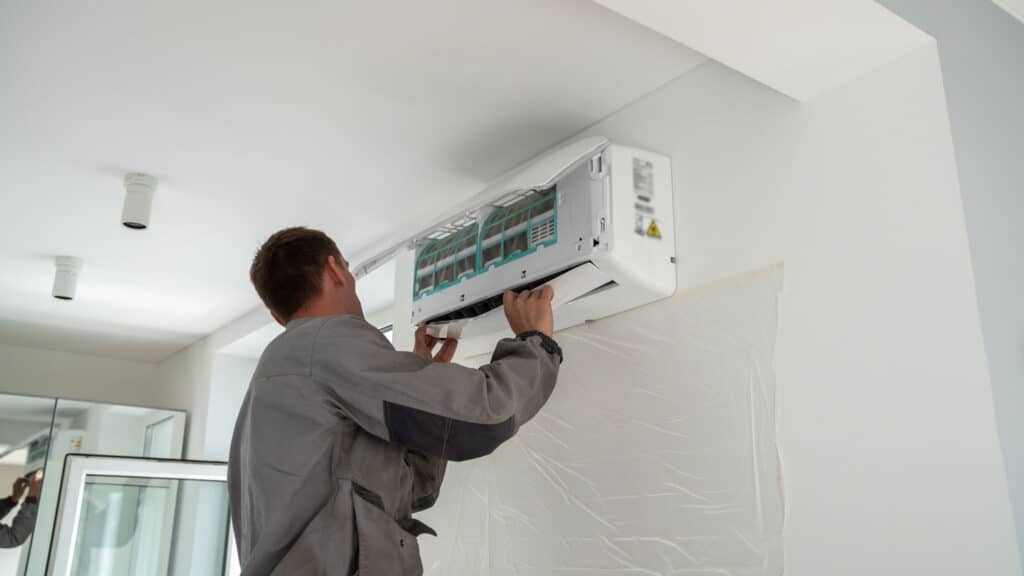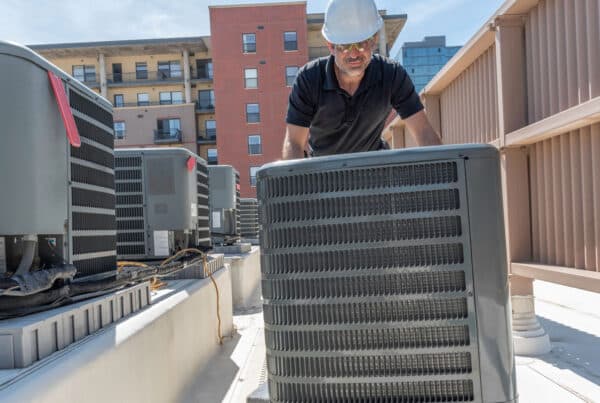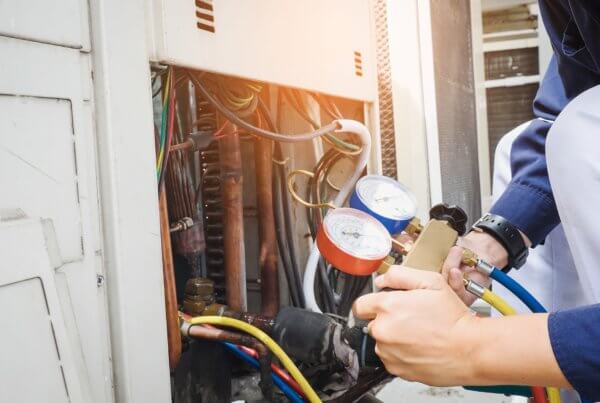A Straightforward Guide from a Utah HVAC Pro
Let’s be real: if you’re here, it probably means you’ve got rooms in your house that just don’t feel right. Maybe the upstairs gets too hot in the summer. Maybe the basement never quite warms up in the winter. You’ve heard a few people mention ductless mini-splits, maybe even seen one on a friend’s wall, but beyond that? Not much.
So here’s the no-fluff version. What they are, where they work well, where they don’t, and whether they’re actually worth it for your home.
First Off: What Is a Ductless Mini-Split?
A ductless mini-split is a type of HVAC system that lets you heat and cool specific areas of your home without needing ductwork. It’s made up of two main components:
- An indoor air handler, usually mounted high on a wall or ceiling
- An outdoor condenser unit, which sits outside like a traditional AC compressor
These two units are connected by a small bundle of wires and refrigerant lines that run through a 3-inch hole in the wall. That’s how the indoor and outdoor units “talk” to each other—transferring heat in or out of your home, depending on whether you’re heating or cooling.
Here’s how it actually works:
- In the summer, the system pulls heat from the air inside your home and moves it outside.
- In the winter, it works in reverse, pulling heat from the outdoor air (yes, even when it’s cold) and bringing it inside.
That’s possible because mini-splits use heat pump technology. It doesn’t generate heat, it just moves it around, which is a lot more efficient than old-school electric resistance heat or a space heater.
Do you need a separate outdoor unit for each indoor one?
Nope. Most systems are “multi-zone,” which means you can connect multiple indoor units (usually 2 to 5) to a single outdoor condenser. Each indoor unit controls the temperature for its own space, so you can keep one room cool without wasting energy cooling the whole house.
There are single-zone systems too, which just have one indoor unit paired with one outdoor unit. That’s a good fit for smaller spaces like a garage workshop or a home office over the garage that always bakes in the summer.
You don’t need ducts, you don’t need vents, and in most cases, you don’t need to mess with your existing HVAC system at all. That’s what makes mini-splits so useful for add-ons, older homes, or any space your central system doesn’t quite reach.

Why Folks in Utah Are Going for Mini-Splits
We install a lot of these around Salt Lake and across the Wasatch Front. Here’s what people tend to like about them once they’re in:
1. You Can Actually Fix the Hot Upstairs / Cold Basement Problem
Every home has that one spot. You crank the heat, but the basement’s still freezing. Or the AC runs nonstop but the upstairs is still roasting. A mini-split lets you target that exact room and adjust just that area. No more playing thermostat Tetris.
2. They Don’t Waste Energy on Rooms You’re Not Using
Got a guest room that’s empty most of the year? A mini-split won’t dump conditioned air into it unless you turn it on. That means less energy use, lower bills, and better control over how your system works.
Most newer systems are rated with high SEER (Seasonal Energy Efficiency Ratio) scores, which is just a fancy way of saying they’re built to run efficiently without wasting electricity.
3. Great for Add-Ons or Older Homes
If your home doesn’t have ductwork—or you’re adding onto the house and don’t want to mess with extending ducts—this is one of the best solutions out there. No need to tear into walls or ceilings.
4. They’re Quiet
Like, whisper-quiet. You’ll hear a low hum at most. If your current system roars on like a leaf blower every time it kicks in, this’ll feel like night and day.
5. Works for Both Heating and Cooling
Some folks think they’re just glorified air conditioners, but they heat too. And yes, they can keep up with Utah winters. Not ideal for every home’s main heat source, but for specific zones? They do the job just fine, even when it’s single digits outside.
There Are a Few Things to Consider
Mini-splits aren’t magic. Here are a couple realities:
- They’re not cheap up front.
If you’re comparing to a portable AC or baseboard heater, this will cost more. That said, long-term energy savings can even things out. Depends on your usage. - You’ll see the indoor unit.
Some people care, some don’t. It’s not an eyesore, but it is visible. If you’re picky about aesthetics, it’s something to think about. - Sizing matters.
Too small and it won’t keep up. Too big and it’ll short-cycle and wear out faster. We do load calculations before install to make sure it’s dialed in for your space.
So… Is It Worth It?
Here’s the honest answer: it depends on your house.
If you’ve got one or two areas that are always uncomfortable, maybe a sunroom, a basement bedroom, a garage you’re turning into an office, then yes, a ductless mini-split is probably one of the best ways to fix the problem without overhauling your whole HVAC setup.
But if your whole home is drafty or struggling, we might want to look at your insulation, ducts, or main system first. A mini-split is a tool, not a fix-all.

Want a Second Opinion?
If you’re still not sure, give us a call. We’re not into high-pressure anything. We’ll take a look, give you a straight answer, and let you know if it’s worth considering or if there’s a better route for your space.
We’ve been helping Utah families stay comfortable since 1920.
We know this climate. We know these homes. And we’re happy to help, whether you’re ready to install or just trying to understand your options.
Get in touch when you’re ready to chat.




